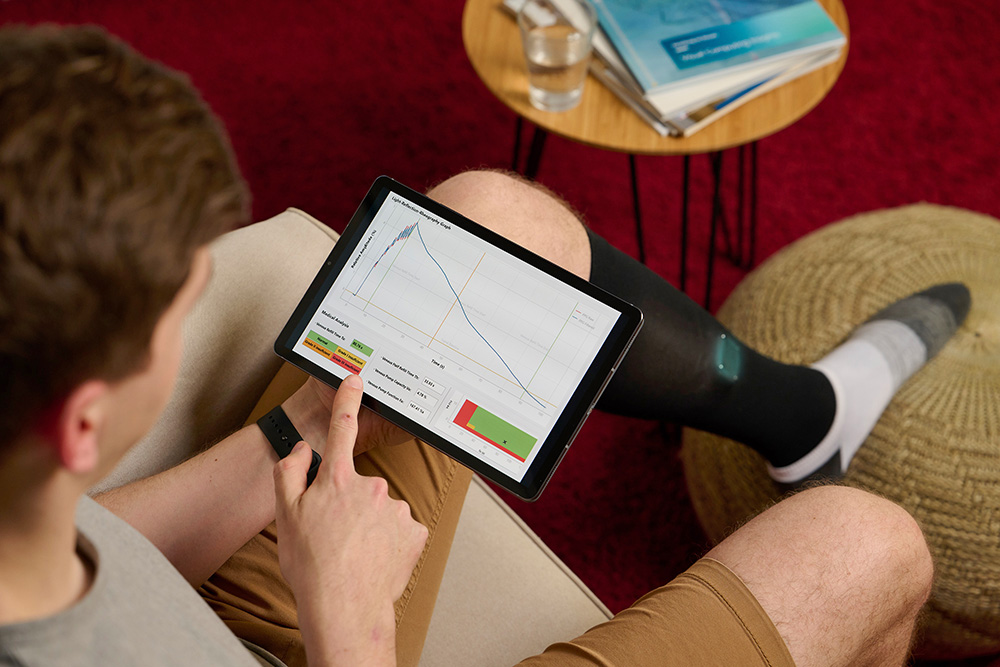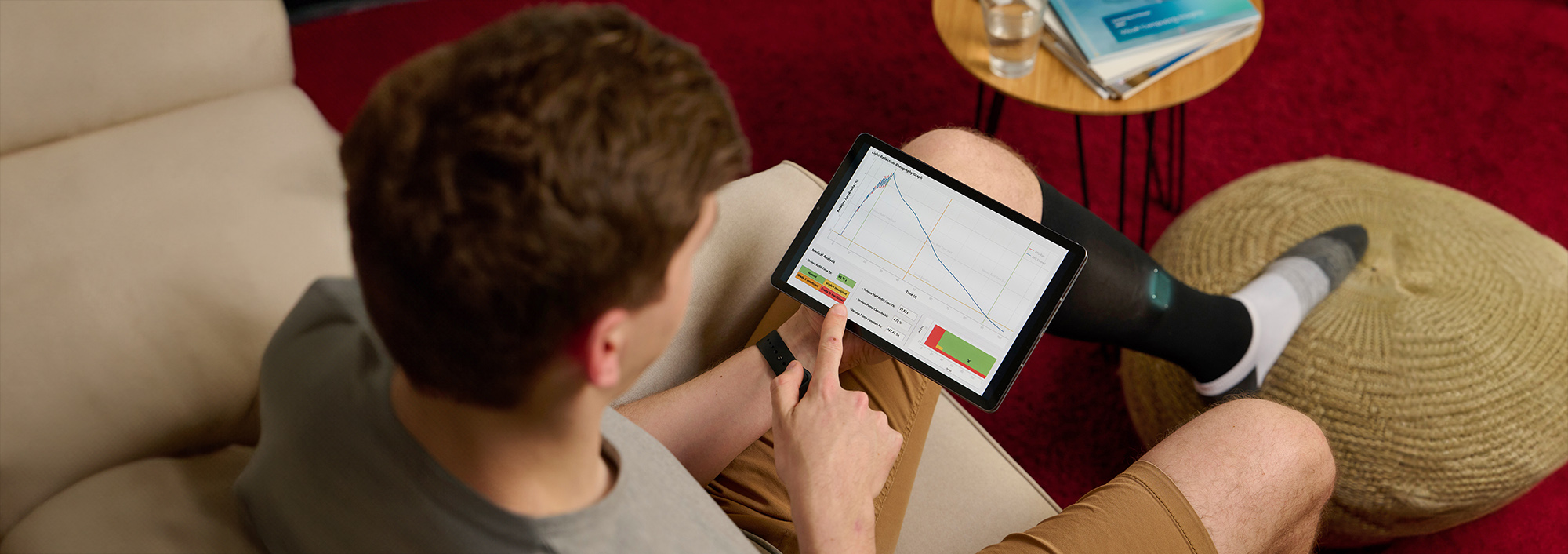Location-independent vein function measurement in telemedicine
Detecting thromboses earlier and relieving the burden on nursing staff
The veinXam system developed by Fraunhofer IGD uses a small sensor to detect impairment of the deep leg veins at an early stage, thereby enabling physicians to intervene and prevent subsequent serious consequences. This telemedical solution monitors vein function, wherever the patient may be, by means of sensors which continuously measure the blood flow in the deep veins of the leg. The system can also be integrated into a compression stocking, which many people have to wear permanently anyway. If veinXam detects pathological changes, it sends a notification to an app or, in the case of an individual receiving inpatient care, to the nursing staff. In this way, thromboses can be detected earlier and treated more promptly. Fraunhofer IGD will be showcasing veinXam at the DMEA in Berlin during the week of 9th - 11th April. Interested parties can see the system in action at the Fraunhofer booth.

Darmstadt: A small clot can have major consequences. Deep vein thrombosis (DVT) exhibits such diffuse symptoms that it is often diagnosed too late. As a result, patients then suffer from secondary conditions such as venous insufficiency and, in severe cases, lung embolisms and post-thrombotic syndrome. If thromboses can be detected and treated more quickly, serious consequences can be prevented and cost-intensive therapies avoided. In the veinXam system, the Fraunhofer Institute for Computer Graphics Research IGD has developed a telemedical solution that reduces the risk of thrombotic disease through the monitoring of vein function by means of a miniaturized sensor unit.
A new approach to proven technology
“veinXam is a pioneering solution based on tried-and-tested light reflection rheography,” explains Florian Kirchbuchner, Head of Smart Living & Biometric Technologies. “We facilitate continuous monitoring of venous functions throughout the day by combining cost-effective, wearable sensor technology with a smartphone app.” Whether it is used in the aftermath of an operation, as a check-up or for people with a history of thrombosis, veinXam reliably collects relevant data without physicians or nursing staff even being present.
The sensor unit records changes in blood volume using an optical analog front end, an LED and photodiodes for light with a wavelength of 880 nm in the near infrared range. The data is transmitted via Bluetooth Low Energy to a smartphone app, which then performs all the necessary evaluation steps. Florian Kirchbuchner: “If the system registers a pathological change, it sends an alert to the hospital staff or, when used at home, displays a warning on the patient’s smartphone.”
Relieving the burden on the healthcare system through autonomous control
Older people in particular are susceptible to deep vein thrombosis. In this age bracket, the incidence is almost one in a hundred. A telemedical application such as Fraunhofer IGD’s veinXam is particularly helpful to this target group. While traditional monitoring is carried out by a physician, veinXam relies on the active involvement of the patient him or herself. Florian Kirchbuchner: “Once the system has been non-invasively applied to the skin, users receive instructions via an app on how to perform the pumping movements required for the measurement.”
“There is a shortage of specialists in Germany,” he continues. “With the independent and permanent control provided by veinXam, we are able not only to avoid the costly treatment of serious secondary diseases, but also to provide valuable support to medical staff.” veinXam thus not only offers an effective method for optimizing vein function measurement, but also contributes to relieving the burden on the healthcare system. Visitors to the DMEA will have the opportunity to gain insights into the veinXam app by watching a prototype of the system operating in real time. Members of the Fraunhofer IGD research team will also be presenting this and other telemedical solutions for improving patient care in a lecture session at the DMEA. Interested parties are invited to the program area _HUB 1, Hall 1.2 on Tuesday 9th April (10:15 to 11:00 am).
 Fraunhofer Institute for Computer Graphics Research IGD
Fraunhofer Institute for Computer Graphics Research IGD